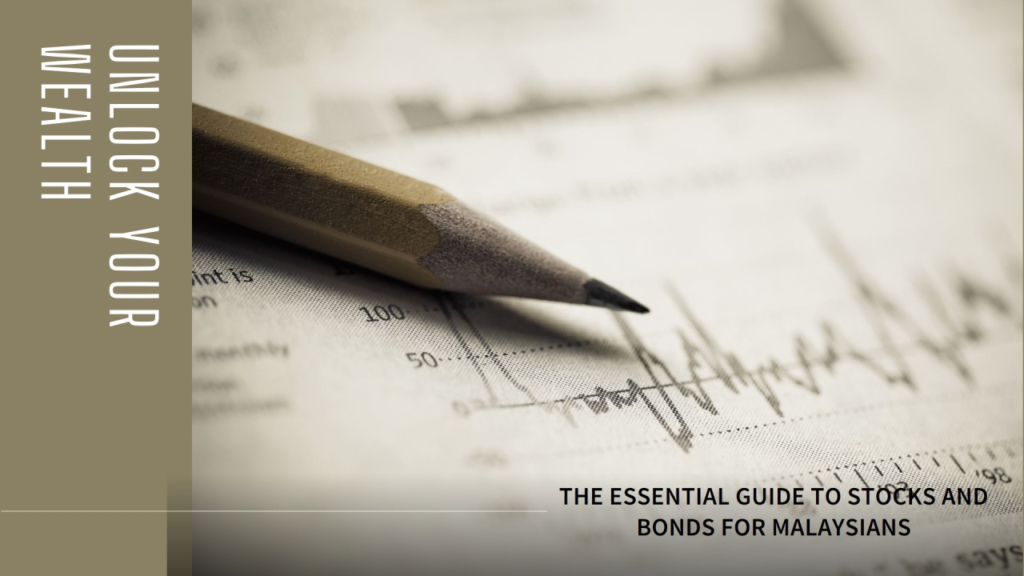As a Licensed Financial Planner, my aim is to empower Malaysians with the knowledge they need to make informed financial decisions. Building a solid foundation in understanding stocks and bonds is crucial for anyone looking to invest wisely and grow their wealth. In this article, we will delve into the basics of bonds vs stocks as two fundamental investment options, their benefits, and how they can fit into your financial strategy.
Understanding Stocks
What Are Stocks? Stocks, also known as shares or equities, represent ownership in a company. When you purchase stocks, you buy a piece of the company, making you a shareholder. This entitles you to a portion of the company’s profits and assets.
Benefits of Investing in Stocks:
- Potential for High Returns: Historically, stocks have provided higher returns compared to other asset classes over the long term.
- Dividend Income: Many companies distribute a portion of their earnings to shareholders in the form of dividends, providing a source of passive income.
- Ownership and Influence: As a shareholder, you may have voting rights in company decisions, depending on the type of stock you own.
Considerations:
- Volatility: Stock prices can fluctuate widely due to market conditions, economic factors, and company performance.
- Research Intensive: Successful stock investing requires ongoing research and monitoring of market trends and company health.

Invest Smart: Understanding the Power of Stocks and Bonds
Understanding Bonds
What Are Bonds? Bonds are debt securities issued by entities such as governments, municipalities, and corporations to raise capital. When you buy a bond, you are essentially lending money to the issuer in exchange for periodic interest payments and the return of the bond’s face value at maturity.
Benefits of Investing in Bonds:
- Lower Risk: Bonds are generally considered safer investments than stocks, especially government bonds.
- Predictable Income: Bonds provide regular interest payments, which can be a stable source of income.
- Diversification: Adding bonds to your portfolio can help balance risk and provide stability.
Considerations:
- Lower Returns: Bonds typically offer lower returns compared to stocks.
- Interest Rate Risk: Bond prices are inversely related to interest rates; when interest rates rise, bond prices fall.
- Credit Risk: There is a risk that the issuer may default on interest payments or fail to return the principal amount.
How to Incorporate Stocks and Bonds into Your Financial Plan
- Assess Your Risk Tolerance: Determine how much risk you are willing to take. Stocks are generally riskier but offer higher returns, while bonds are safer but offer lower returns.
- Diversify Your Portfolio: A mix of stocks and bonds can help balance risk and reward. Diversification reduces the impact of poor performance in any single investment.
- Set Financial Goals: Clearly define your short-term and long-term financial goals. This will guide your investment choices and help you stay focused.
- Stay Informed: Continuously educate yourself about market trends, economic conditions, and individual investment performance. Staying informed is key to making sound investment decisions.
Conclusion
Understanding the basics of stocks and bonds is an essential step towards building a robust investment portfolio. By balancing these two types of investments, you can create a strategy that aligns with your financial goals and risk tolerance.
I hope this article helps you grasp the fundamentals of stocks and bonds. If you have any questions or need further clarification, please don’t hesitate to reach out. Happy investing!
Disclaimer: This article reflects my personal views and experiences as a Licensed Financial Planner. It does not represent the opinions or positions of any company or third party.

About the Author
Dr. Rajendaran Vairavan is a Licensed Financial Planner with CFP certification and a seasoned practitioner in the financial planning industry. Dr. Rajendaran writes insightful articles focusing on personal finance, investment strategies, and wealth management. With extensive expertise in the field, he offers practical advice to help readers build a secure financial future. Connect with him on LinkedIn to stay updated on his latest financial insights.


